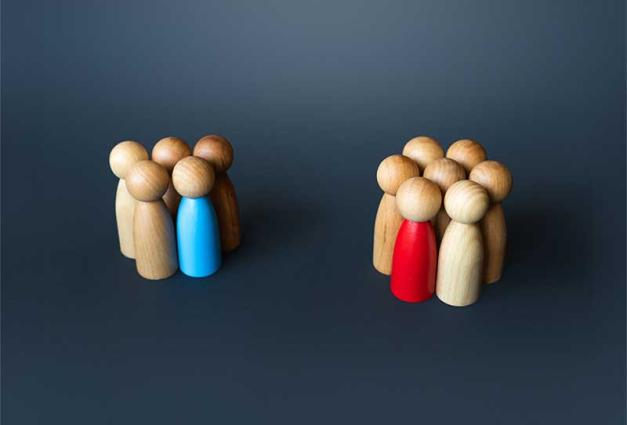While feeling disappointed is a common experience in our daily lives, how people express or hide their disappointment varies based on the situation and their cultural upbringing. But how much do preschoolers from different cultures vary in how they express disappointment? Do young children already know how to “hide” their disappointment when interacting with adults? And, if so, do they know how to do it in ways that are specific to their culture, or does it take many more years of schooling and disappointments to learn how to do that?
The “Disappointing Gift” Scenario
To answer these questions, we looked at how preschoolers living in Ann Arbor, Michigan, Beijing, and Tokyo reacted to a situation called the “disappointing gift” scenario. In this situation, children looked at several potential prizes, or “gifts,” and ranked their most through least favorite. Their favorite might be a fire truck or some bubbles, and their least favorite might be a broken comb or a bottle cap. Then, they were told that they would receive their favorite gift when the experimenter came back. Unfortunately, instead of their favorite gift, such as the bubbles, children got their least favorite gift—the broken comb.
As you can imagine, most children felt, and even said they felt disappointed. However, even though they said they felt disappointed, they were also more likely to show a positive expression such as a smile when they received and were shown the “disappointing” gift by an adult. It wasn’t until the adult left that they showed expressions of sadness. This suggests that even preschoolers are already able to “hide” their disappointment from others in social settings.
But Culture Made a Difference
Children from the three cultures had somewhat different reactions, depending on whether an adult was present when they received the disappointing gift. Preschoolers in the United States showed more sadness than the Chinese or Japanese children, both in the presence of an adult and when they were left alone.
In predominantly White, urban, middle-class cultures of the United States, making one’s needs known and expressing one’s true self via emotions, whether positive or negative, are highly valued. In contrast, in many cultures and locations, including China and Japan, controlling one’s emotions is highly valued because expressing strong emotions may jeopardize group harmony. What surprised even us was that children as young as three or four would already know and follow their cultural values. Chinese and Japanese preschoolers, who are actively being taught how they should behave in the presence of others, displayed less sadness and other negative expressions than children in the United States.
Also, there were some subtle differences across the two Asian cultures. Japanese children showed a decrease in neutral facial expressions (where a neutral expression would have brows in resting position, eyes normally open and mouth relaxed) after they received the disappointing gift. Chinese children, however, showed similar levels of neutral expressions across different phases of our task. In essence, it was as if they were showing a “poker face,” even though the Chinese children were also the most likely to say that they felt “sad” or “bad” when asked about how they felt. However, if Chinese children tend to “suppress” their facial expressions of emotions, then why would they be more likely to say that they felt bad? These and other questions suggest that young children are highly sensitive to how the adults and culture around them provide opportunities to express their feelings, and that there are cultural variations in emotion expression to the exact same situation which can be observed as early as preschool.
Chinese children’s higher “suppression” of their facial expressions could reflect the possibility that even preschoolers know the “display rules” for disappointing situations—rules for how and when a particular emotion may be expressed in their culture. Chinese culture values emotional control. Thus, Chinese children may have already learned that not betraying their negative emotions through facial expressions, even when disappointed, is the “right” thing to do.
The fact that children as young as preschoolers can already “hide” or “suppress” their emotions suggests that it is important to understand how cultures, families, and schools shape children’s emotional development and to consider our own goals and practices as we observe and react to the emotions of the children among us.
For Further Reading
Ip, K. I., Miller, A. L., Karasawa, M., Hirabayashi, H., Kazama, M., Wang, L., Olson, S. L., Kessler, D., & Tardif, T. (2020). Emotion expression and regulation in three cultures: Chinese, Japanese, and American preschoolers’ reactions to disappointment. Journal of Experimental Child Psychology, 201, 104972. DOI: 10.1016/j.jecp.2020.104972
Ka I Ip is the Susan-Nolen Hoeksema Postdoctoral Fellow at Yale University. His research focuses on understanding how sociocultural contexts shape emotion regulation and the developing brain. Twitter: @KaIIp4
Twila Tardif is Professor of Psychology and Kenneth G. Lieberthal and Richard H. Rogel Professor of Chinese Studies at the University of Michigan. Her primary research interests explore relationships between language, culture, and cognition and how emotional experiences are grounded in culture.




